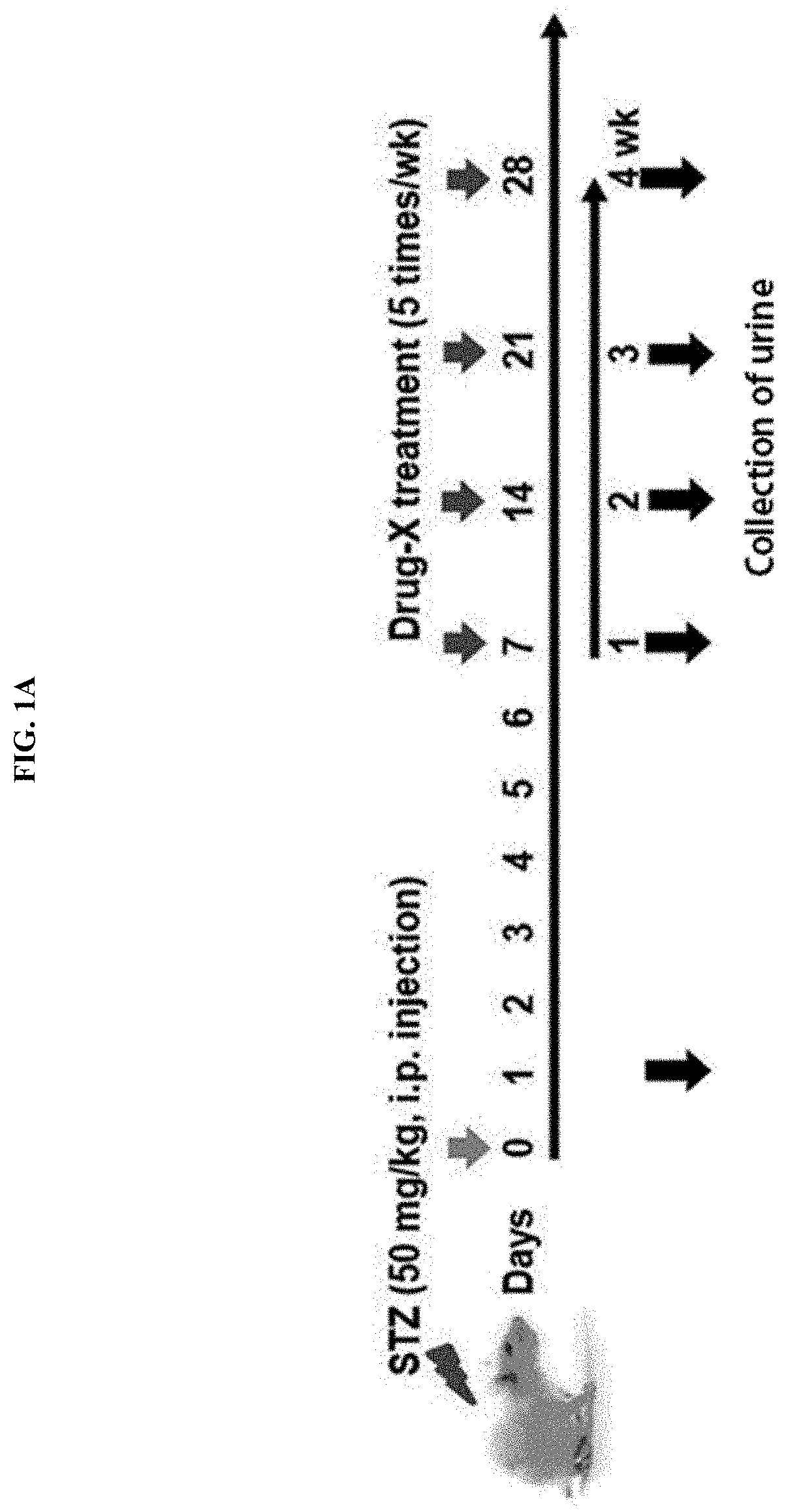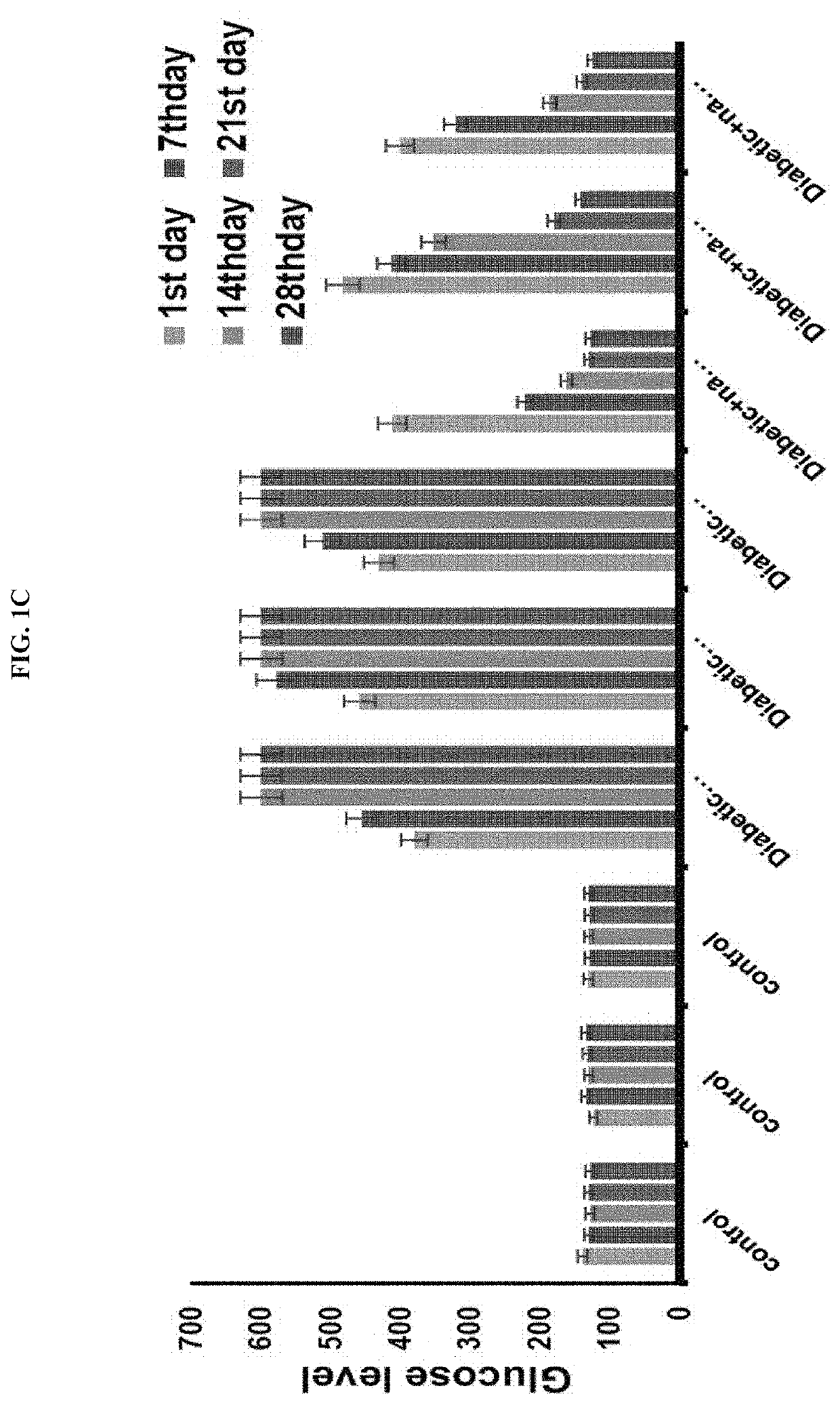Biomarker SBP1 for early diagnosis of kidney diseases, and use thereof
a kidney disease and biomarker technology, applied in the field of biomarkers for early diagnosis of kidney diseases, can solve the problems of kidney being one of the most vulnerable organs, kidney may be very slowly injured, additional complications, etc., and achieve the effect of accurately determining renal dysfunction, high sensitivity and specificity, and effectively diagnosing abnormal symptoms
- Summary
- Abstract
- Description
- Claims
- Application Information
AI Technical Summary
Benefits of technology
Problems solved by technology
Method used
Image
Examples
example 1
tal Animals and Methods
[0102]Experiments were carried out using male SD rats (6-week-old, male Sprague-Dawley rats) purchased from Charles River Laboratories (Orient, Seoul, Korea) in accordance with the guidelines of the Ethical Committee of Experimental Animal Testing and Research at Sungkyunkwan University.
[0103]1-1. Preparation of Diabetic Animal Models
[0104]In one example of the present invention, as diabetic animal models, STZ-administered diabetic animal models and diabetic models using Zucker Diabetic Fatty (ZDF) rats were prepared.
[0105]First, as a STZ-administered diabetic animal model, a single dose of STZ (50 mg / kg) was intraperitoneally (I.P.) administered to a Sprague-Dawley rat (white), a blood glucose level was measured daily to evaluate whether the blood glucose level is sufficiently increased, thereby confirming the occurrence of diabetes (approximately 5-fold increase), and here, some experimental groups were treated with an anti-diabetic drug for 4 weeks, and uri...
example 2
ion of Diabetic and Renal Failure Animal Models
[0119]2-1. Verification of Model with Diabetes Induced by STZ Administration
[0120]To verify a diabetic animal model induced by STZ administration according to Example 1-1 of the present invention, an experiment was carried out by designing the experimental model as described in FIG. 1A.
[0121]As a result, as shown in FIGS. 1B and 1C, in the control, a normal blood glucose level was shown, but in the STZ-administered animal group, a blood glucose level was increased approximately 6-fold or higher (600 mg / dL or more) compared to the control. However, in an experimental group in which diabetic animals are treated with an antidiabetic drug, it was confirmed that a blood glucose level was decreased gradually on Day 7, Day 14 and Day 21, and decreased to almost the normal level on the last day, Day 28. In addition, as a result of measuring microalbumin in urine, which is one of the most important factors of a diabetic kidney disease, it can be...
example 3
f Using Conventional Marker for Renal Dysfunction
[0138]According to this example of the present invention, it was confirmed whether type II diabetes renal failure animal models have renal failure due to diabetes as clinically shown. As a result, it was demonstrated that all of two types (type I and type II) of diabetic models have renal dysfunction. Therefore, it was proved that BUN, creatinine and microalbumin, which are markers for diagnosing renal function, are highly detected in diabetic rats.
[0139]In addition, in the conventional test for diagnosing renal dysfunction, the induction of renal dysfunction by cisplatin / HgCl2 was diagnosed by measuring representative markers, such as serum creatinine (SCr), BUN and glucose contained in urine, LDH, aspartate aminotransferase (AST) and total protein.
[0140]3-1. Confirmation of Induction of Chronic Renal Dysfunction by Heavy Metal (Mercury, HgCl2)
[0141]Subsequently, following oral administration (1 mg / kg and 5 mg / kg) of representative n...
PUM
| Property | Measurement | Unit |
|---|---|---|
| thickness | aaaaa | aaaaa |
| concentration | aaaaa | aaaaa |
| blood pressure | aaaaa | aaaaa |
Abstract
Description
Claims
Application Information
 Login to View More
Login to View More - R&D
- Intellectual Property
- Life Sciences
- Materials
- Tech Scout
- Unparalleled Data Quality
- Higher Quality Content
- 60% Fewer Hallucinations
Browse by: Latest US Patents, China's latest patents, Technical Efficacy Thesaurus, Application Domain, Technology Topic, Popular Technical Reports.
© 2025 PatSnap. All rights reserved.Legal|Privacy policy|Modern Slavery Act Transparency Statement|Sitemap|About US| Contact US: help@patsnap.com



